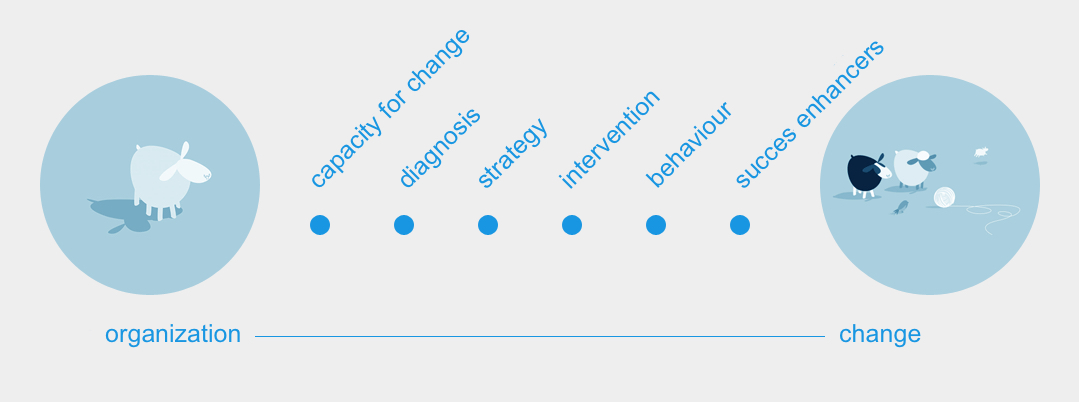Organizational change
No ‘spreadsheet management’, but building your organization around your customer instead
Do you also feel that rules and systems increasingly determine what we must do and that our common sense is underused? Or that nobody really feels responsible for, or owns, a problem these days? Then it’s time to stop driving on square wheels! Rebuild your organization around your customers and don’t let systems determine how your customers should behave. Systems are there to help.
Formula 1 is a great example of this. Max Verstappen’s team puts systems in place to help Max win. His environment before and during the race determines what is needed, not vice versa. Organizational change needs to focus on this: who does what here and why?
What does this mean?
Organizational change is about dealing with uncertainty. Taylor’s era of hierarchical control by the top of the organization and ‘SMART execution’ by the employees is now history. For the sake of quality, customization, and speed of action, it is necessary that the employees coordinate decisions themselves; after all, they have the insight. Professional skills can once again be the primary focus.
Leaders have the overview and ensure that the organization (staff and support) facilitates the work of the professionals and not vice versa. It is also important that:
- all managers and employees get behind the organization’s mission and vision, and
- an organizational culture is being built in which performance, innovation, cooperation (openness, team orientation) and stability (clear frameworks and rules) take centre stage.
That is what makes organizations successful today. So no ‘spreadsheet management’ by creating false security on paper but dealing with the uncertainty of practice.
The standard recipe for achieving organizational change is to diagnose, design, and perform work on a project basis (rational approach). Unfortunately, this approach proves unsuccessful in more than 70% of cases in practice. Organizational change is more complex.
It is necessary to pay attention to:
- the organization’s capacity for change
- the diagnosis
- the change strategy
- the intervention plan
- the conscious and unconscious behaviour of groups and individual employees
- leadership, and
- success enhancers.

Successful organizations also have a different view of HRM
They mainly invest in:
- leadership
- team development
- health and well-being
- a culture that focuses on performance, innovation, people, and stability, and
- digitalising the management tasks.
Recruitment, learning and development, and systems are geared to this. The days of Personnel and HRM are over: the motto is coherence in work, organization, and health.
We can support your organizational change as a process supervisor, coach, and consultant.
Cultural change (breaking through persistent behavioural patterns)
Based on the research findings of Schein, Scott-Morgan, Rump, Pavlov, and Skinner, Bureau Schaepkens has developed a practical approach to changing the culture of an organization. An important principle in this approach is that behaviour and attitudes can be changed: ‘your brain wants to change’. Values, by contrast, change little or not at all. The approach starts with knowing your organization’s desired written reality (mission, vision, behaviour, attitudes, and core values). The unwritten reality (how people really behave) is then identified. This is followed by a confrontation of both realities so the desired interventions can be determined. The approach has proven itself and is practical in nature.


